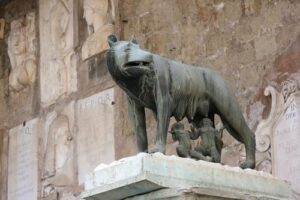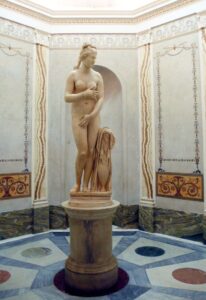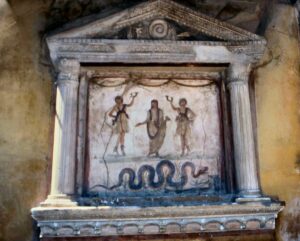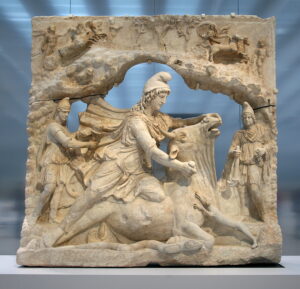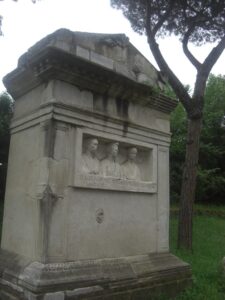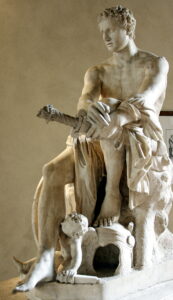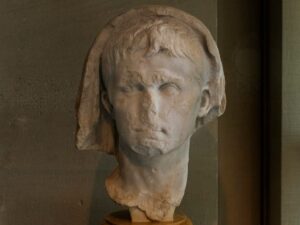Religion in the Roman Empire: Beliefs and Practices
Table of Contents
Roman religious life
Religion in the Roman Empire encompassed a variety of beliefs and practices. It was characterized by polytheism, with a pantheon of gods and goddesses who were believed to influence all aspects of life. The Romans viewed their religious practices as essential to the stability and success of their state. They believed that their piety, or pietas, was crucial in maintaining favorable relations with the divine.
This belief system was not static; it evolved as the Empire expanded, incorporating various local cults and deities from conquered territories. The result was a rich and diverse religious landscape, where traditional Roman deities coexisted with those from other cultures.
Influence of Greek and Etruscan Religions
The religious practices of the Romans were influenced by the earlier Greek and Etruscan traditions. Greek religion introduced many deities and myths that were integrated into Roman culture through a process known as interpretatio graeca. This allowed the Romans to align their gods with those of the Greeks, adapting their stories and attributes to fit Roman values. For instance, Jupiter, the king of the gods, was equated with the Greek Zeus, while Juno was associated with Hera.
Etruscan religion contributed to the development of augury, a practice where priests interpreted the will of the gods through the observation of birds and other omens. The Etruscans also influenced Roman architecture and temple design, as seen in the construction of the Temple of Jupiter on the Capitoline Hill. These influences laid the groundwork for the Roman religious system, which combined elements from various cultures while maintaining a distinct identity.
Founding Myths and Divine Destiny
The most famous myth involves the twin brothers Romulus and Remus, who were said to have been raised by a she-wolf and later founded Rome. This myth emphasized themes of divine favor and destiny, suggesting that Rome was destined to rule.
Another important figure in Roman mythology is Aeneas, a Trojan hero who was believed to have brought sacred objects from Troy to Italy, establishing the foundations of Roman religion. The Palladium, a sacred statue of Athena, was said to have been brought by Aeneas and kept by the Vestal Virgins. These myths not only provided a narrative for the origins of Rome but also reinforced the idea of divine support for Roman endeavors, linking the city’s success to its religious practices.
Roman Deities
The Roman pantheon included a wide array of deities, each with specific functions and attributes. Jupiter, the king of the gods, represented authority and was associated with the state. Juno, his wife, was the protector of women and marriage. Other deities included Mars, the god of war, and Venus, the goddess of love. The Romans also worshipped lesser deities, such as household gods known as Lares and Penates, who were believed to protect the home and family.
Temples dedicated to these deities, such as the Temple of Vesta, were central to Roman religious life. The flexibility of Roman theology allowed for the incorporation of new gods and practices, reflecting the Empire’s diverse population and cultural exchanges. For example, the cult of Isis, an Egyptian goddess, gained popularity in Rome, showcasing the syncretic nature of Roman religion.
The Twelve Main Roman Gods and Goddesses
Twelve Lesser Known Roman Gods and Goddesses
Private and Domestic Cults
Private and domestic cults were integral to Roman religious life. Every household maintained a shrine where family members could worship their domestic deities. The paterfamilias, or head of the household, was responsible for conducting rituals and offerings to the Lares and Penates. These practices reinforced family unity and continuity, as well as a connection to ancestral traditions.
Women played a role in domestic worship, particularly through the cult of Vesta, the goddess of the hearth. The presence of household shrines and the practice of daily offerings show the importance of religion in everyday life, emphasizing personal devotion alongside public worship. The Lararium, a household shrine, often featured images of the Lares and Penates, and families would offer food, wine, and incense to these deities to ensure their protection and favor.
Integration of Local Cults
As the Roman Empire expanded, it encountered a multitude of local cults and religious practices. Rather than suppressing these traditions, the Romans often integrated them into their own religious framework. Temples were built for local deities, such as the Temple of Apollo in Delphi, and their worship was often framed within the context of Roman religion.
This practice not only honored the traditions of conquered peoples but also promoted loyalty to Rome. The coexistence of local and Roman deities is evident in inscriptions and dedications found throughout the Empire, such as those honoring the goddess Fortuna or the Egyptian god Serapis. The Roman policy of religious tolerance allowed for a rich variety of beliefs, as seen in the widespread worship of Mithras, a deity of Persian origin, among Roman soldiers.
Religious Practice
Religious practice in the Roman Empire encompassed both public and personal rituals. Public ceremonies were often elaborate and included sacrifices, prayers, and festivals. These events were conducted by priests and were essential for maintaining the favor of the gods.
Personal devotion, on the other hand, involved daily prayers and offerings at household shrines. The Romans believed that proper rituals were necessary to ensure divine favor and avoid misfortune. The principle of do ut des, meaning “I give so that you may give,” underscored the transactional nature of Roman religion, where the fulfillment of obligations to the gods was expected to result in blessings in return.
Religious Festivals and Public Rituals
The Roman calendar was filled with religious festivals, many of which were tied to agricultural cycles or significant historical events. These festivals often included games, feasts, and public displays of piety. Major festivals, such as the Ludi Romani, honored the gods and celebrated military victories.
The participation of the populace in these events reinforced communal identity and social cohesion. Rituals were often conducted in public spaces, such as the Forum. The integration of political and religious elements in these festivals highlighted the connection between the state and its divine patrons. For instance, the Saturnalia, a festival in honor of Saturn, involved a temporary reversal of social roles, allowing slaves to be treated as equals.
Funerals and the Afterlife
Roman beliefs about the afterlife were diverse and evolved over time. Traditional practices involved elaborate funerals, where the deceased were honored with sacrifices and offerings. The Romans believed in the existence of the Manes, spirits of the dead, who required care and remembrance.
Funerary rites varied based on social status, with the wealthy often providing extravagant burials, such as those seen in the tombs of wealthy patricians. The Parentalia festival was a time for families to honor their ancestors.
Over time, the rise of mystery religions introduced new concepts of the afterlife, influencing Roman views and practices. The cult of Mithras, for example, promised initiates a form of salvation and eternal life, which appealed to many Romans seeking spiritual fulfillment.
Religion and the Military
Generals often sought divine favor before battles, making vows to the gods for victory. Military camps were designed with religious considerations, including shrines and altars. Soldiers participated in religious observances, including the worship of the emperor, which reinforced loyalty to the state.
The suovetaurilia, a ritual sacrifice of a pig, sheep, and bull, was commonly performed before major battles to purify the army and seek the favor of the gods. The military’s close relationship with religion is further exemplified by the worship of Mars, the god of war, who was invoked for protection and victory in battle.
Religion and Politics
The relationship between religion and politics in the Roman Empire was complex and interdependent. Political leaders often held religious offices, blurring the lines between civic duty and religious obligation. The emperor was seen as a divine figure, and the Imperial cult became a means of promoting loyalty and unity within the Empire. Religious reforms under emperors like Augustus sought to align state interests with religious practices.
The rejection of traditional Roman religion by groups such as Christians posed challenges to the political order, leading to conflicts that shaped the Empire’s trajectory. The eventual adoption of Christianity as the state religion marked a significant transformation in the religious landscape of Rome, as seen in the Edict of Thessalonica in 380 AD, which declared Christianity the official religion of the Empire.
Emergence of Christianity
The emergence of Christianity within the Roman Empire represented an important shift in religious beliefs. Initially viewed as a sect within Judaism, Christianity gained followers among diverse populations. Its emphasis on personal faith and salvation contrasted with traditional Roman practices. The refusal of Christians to worship the emperor and participate in state rituals led to persecution, as seen in the reign of Nero, who blamed Christians for the Great Fire of Rome in 64 AD.
Christianity’s appeal grew over time, particularly among the lower classes and marginalized groups. By the late fourth century, Christianity was recognized as the official religion of the Empire, fundamentally altering the religious landscape and leading to the decline of traditional Roman polytheism. The Council of Nicaea in 325 AD further solidified Christian doctrine and established a unified approach to worship, marking an irreversable change in the history of the Roman Empire.
